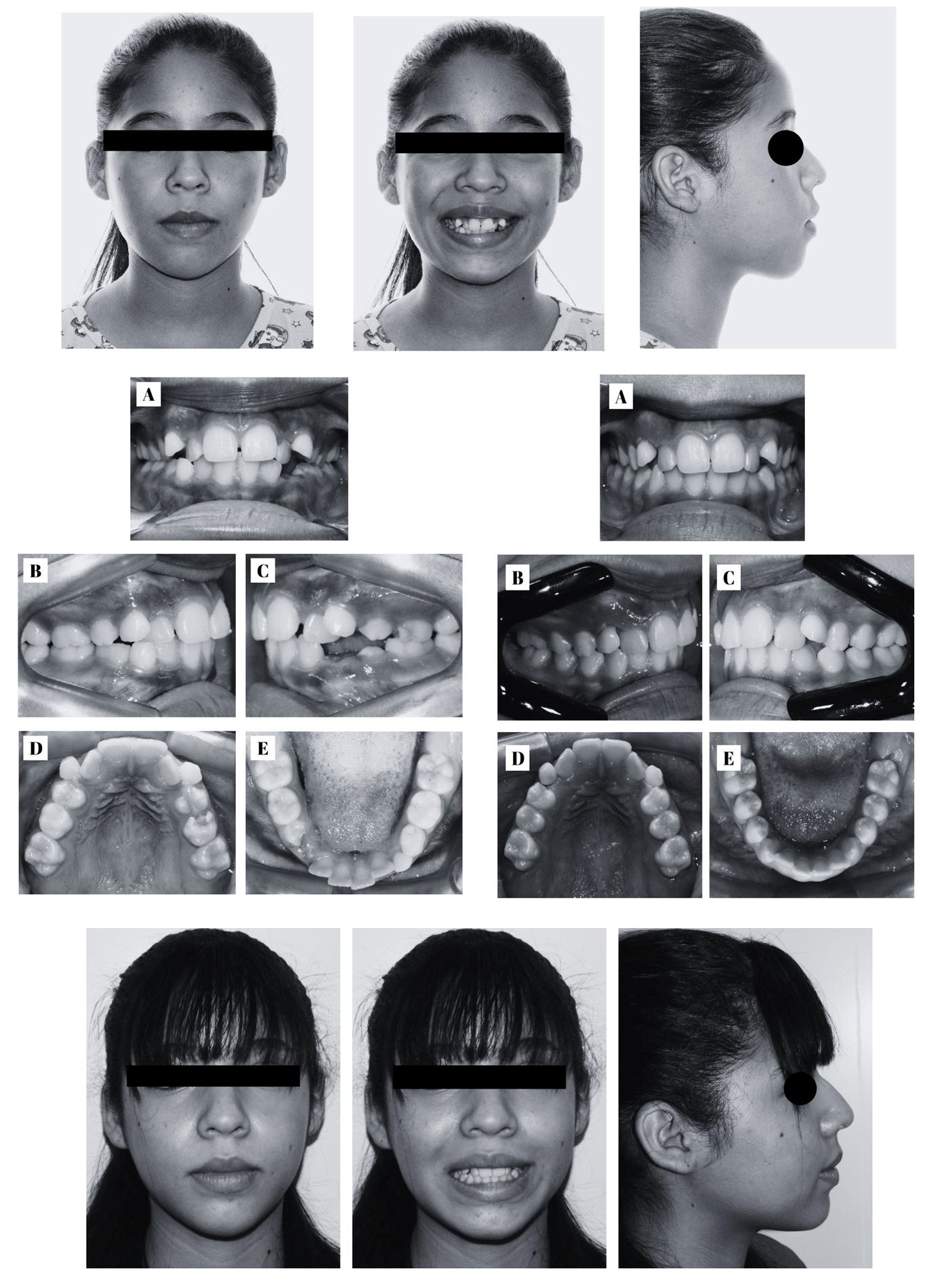Treatment of Class II division 1 Angle malocclusion with Extrabucal apparatus: a case report
Main Article Content
Abstract
Angle’s class II division 1 malocclusion is a condition where the maxillary first molar occludes in a mesial position in relation to the buccal groove of the mandibular first molar, altering the sagittal relationship between the jaws. The objective of the present study is to report a clinical case of treatment of Angle’s class II division 1 malocclusion in a 10-year-old female patient who was in the second transitional period of mixed dentition. The patient had mild to moderate crowding, due to lack of space to accommodate the lateral incisors and permanent canines in the maxillary arch. The proposed treatment was the use of the AEB for the distalization of the maxillary first molars, aiming at the correction of the class II molar relationship and, consequently, favoring the gain of space in the arch for the alignment of the crowded elements. According to the results presented at the end of the treatment, it was possible to observe the effectiveness of the headgear in the correction of class II molars and in the gain of arch space for the permanent incisors and canines.
Article Details

This work is licensed under a Creative Commons Attribution 4.0 International License.
Authors retain the copyright of their articles and grant the journal the right of first publication under the Creative Commons Attribution (CC BY) license, which allows others to share and adapt the work with proper attribution.
References
Ling HTB, Sum FHKMH, Zhang L, Yeung CPW, Li KY, Wong HM, Yang Y. The association between nutritive, non-nutritive sucking habits and primary dental occlusion. BMC Oral Health. 2018 Aug 22;18(1):145. doi: 10.1186/s12903-018-0610-7.
Guedes-Pinto, A.C. Odontopediatria. 8a ed. São Paulo:Editora Santos; 2010.
Das Neves BM, Capelli Junior, J. Tratamento da má oclusão de Classe II com retrusão mandibular e apinhamento severo superior e inferior, em paciente com crescimento vertical: relato de caso. Revista Clínica de Orthodontia Dental Press. 2021;20(2): 128-142.
Moyers R. Classification and terminology of malocclusion. In:___. Orthodontics. 3th. Rio de Janeiro: Guanabara Koogan, 1979.
Silva Filhho OG, Garib DG, Lara TS. Interceptive orthodontics: a two-phase treatment protocol. São Paulo: Medical Arts; 2013. p. 396-414.
Angle EH. Classification of malocclusion. Dental Cosmos 1899; 248-264.
Reis L. Treatment of class II malocclusion using conjugated AEB. Porto Velho;2018.
Gimenez CMM, Bertoz AP, Bertoz, FA. Treatment of Angle Class II, Division 1 malocclusion with maxillary protrusion using orthopedic devices .Rev. Dent. Press Orthodon. Orthoped. Facial, Maringá. 2007 nov./dec; 12(6):85-100,
Janson G, Valarelli FP, Cançado RH, de Freitas MR, Pinzan A. Relationship between malocclusion severity and treatment success rate in Class II nonextraction therapy. Am J Orthod Dentofacial Orthop 2013.
Shimizu RH, Ambrosio AR, Shimizu IA, Godoy-Bezerra J, Ribeiro JS, Staszak KR. Biomechanical principles of the headgear. Dental Press Journal of Orthodontics and Facial Orthopedics 2004 Nov-Dec;9(6):122-56.
Knorst JK, Menegazzo GR, Emmanuelli B, Mendes FM, Ardenghi TM. Effect of neighborhood and individual social capital in early childhood on oral health-related quality of life: a 7-year cohort study. Qual Life Res. 2019 Jul;28(7):1773-1782. doi: 10.1007/s11136-019-02138-4.
Maroneze MC, Ardenghi DM, Brondani M, Unfer B, Ardenghi TM. Dental treatment improves the oral health-related quality of life of adolescents: A mixed-methods approach. Int J Paediatr Dent. 2019 Nov;29(6):765-774.
Jacobson A. A key to the understanding of extraoral forces. Am J Orthod. 1979 Apr;75(4):361-86. doi: 10.1016/0002-9416(79)90159-3.
Teuscher U. An appraisal of growth and reaction to extraoral anchorage simulation of orthodontic orthopedic results. Am J Orthod, St. Louis. 1986 Feb;89:113-121.
